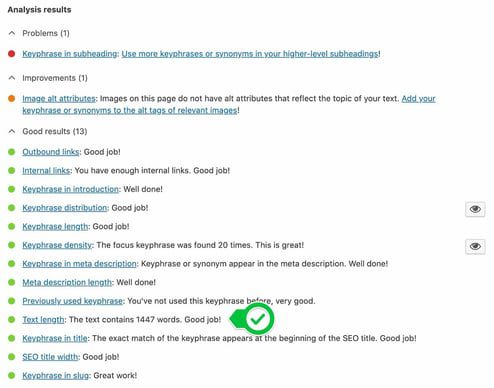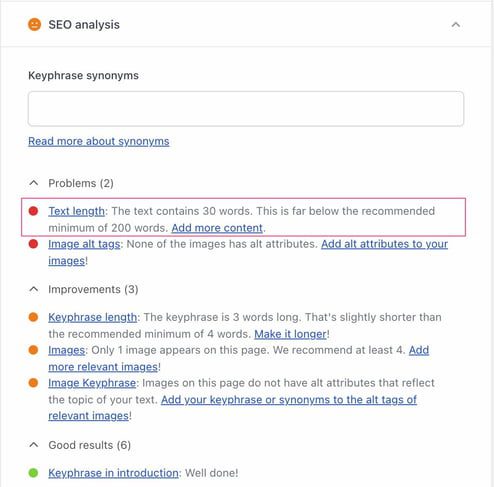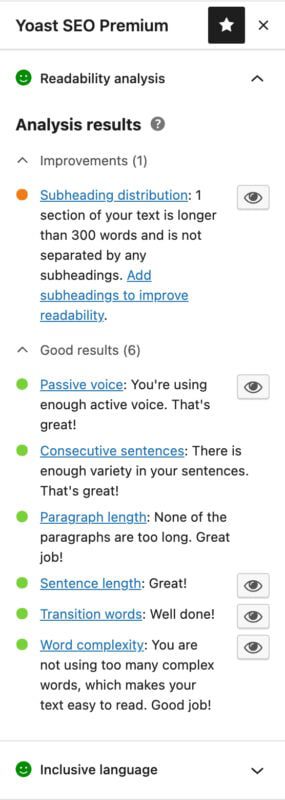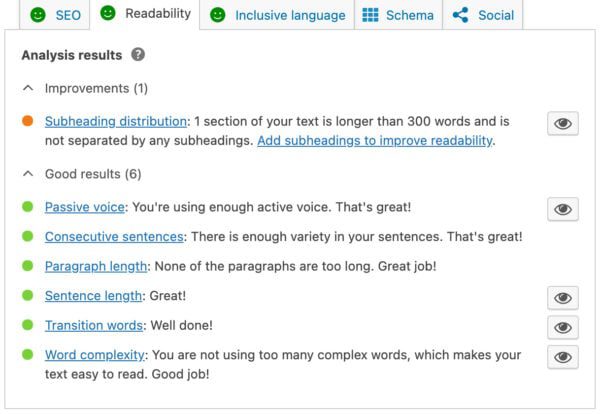First things first: writing content with the inverted pyramid style
Journalists have been using the inverted pyramid writing style for ages. Using it, you put your most important information upfront. Don’t hedge. Don’t bury your key point halfway down the third paragraph. And don’t hold back; tell the complete story in the first paragraph. Even online, this writing style holds up pretty well for some types of articles. It even comes in handy now that web content is increasingly used to answer every type of question a searcher might have. Find out how!
Key takeaways
- The inverted pyramid writing style places crucial information at the beginning to engage readers quickly and effectively.
- Writers should structure articles with core sentences that introduce key concepts to aid comprehension and improve scanning.
- This style enhances SEO by making content clearer and easier to understand for both human readers and search engines.
- While effective for many types of articles, the inverted pyramid may not suit creative writing forms like poetry or complex fiction.
- To implement the inverted pyramid, identify key points, structure your content, and revise for clarity and focus.
What is the inverted pyramid?
Most readers don’t have the time or desire to carefully read an article, so journalists put the critical pieces of a story in the first paragraph to inform and draw in a reader. This paragraph is the meat and potatoes of a story, so to speak. This way, every reader can read the first paragraph, or the lead, and get a complete notion of what the story is about. It gives away the traditional W’s instantly: who, what, when, where, why, and, of course, how.
The introductory paragraph is followed by paragraphs that contain important details. After that, follows general information and whatever background the writers deem supportive of the narrative. This has several advantages:
- It supports all readers, even those who skim
- It improves comprehension; everything you need to understand the article is in that first paragraph
- You need less time to get to the point
- It gives writers a full paragraph to draw readers in
- Done well, it encourages readers to scroll and read the rest of the article
- It gives writers full control over the structure
- It makes it easier to edit articles
An example
Here’s an example of such an intro. We wrote an article about writing meta descriptions in Yoast SEO that answers exactly that question in an easy-to-understand way. We show what it is and why it’s important immediately, while also triggering people to read the rest of the article. Here’s the intro:
“A strong meta description boosts CTR and signals relevance to search engines. This post shows how to craft descriptions that work, with practical tips and ready-to-use templates. You’ll learn the traits of good meta descriptions, common mistakes, and how Yoast SEO can help you get it right. Using these templates and guidelines can boost CTR, align reader expectations, and improve optimization for both users and Google.”
The inverted pyramid is just one of many techniques for presenting and structuring content. Like us, you can use it to write powerful news articles, press releases, product pages, blog posts, or explanatory articles.
This style of writing, however, is not suited for every piece of content. Maybe you write poetry, or long essays with a complete story arc, or just a piece of complex fiction. Critics are quick to add that the inverted pyramid style cripples their creativity. But, even then, you can learn from the techniques of the inverted pyramid that help you to draw a reader in and figure out a good way to structure a story. And, as we all know, a solid structure is key to getting people and search engines to understand your content. We wrote about that in our article on setting up a clear text structure.
The power of paragraphs
Well-written paragraphs are incredibly powerful. These paragraphs can stand on their own. I always try to write in a modular way. That’s because I’m regularly moving paragraphs around if I think they fit better somewhere else in the article. It makes editing and changing the structure of a story so much easier.
Good writers give every paragraph a stand-out first sentence; these are known as core sentences. These sentences raise one question or concept per paragraph. So, someone who scans the article by reading the first sentence of every paragraph will get the gist of it and can choose to read the rest of the paragraph or not. Of course, the rest of the paragraph is spent answering or supporting that question or concept.
The pyramid, SEO, and AI
Front-loading the main point helps SEO perform in an AI era. Lead with the core result to give readers a fast, clear understanding and to signal relevance to search algorithms. Focusing on that idea makes snippets more likely and improves relevance while making the rest of the piece easier to scan, summarize, and reuse across channels. In practice, the inverted pyramid anchors the article in intent, guiding humans and machines toward the same destination: the core answer.
Answering questions
Something else is going on: a lot of content out there is written specifically to answer questions based on user intent. Today, Google answers a lot of questions and answers right away in the search results. That’s why it makes a lot of sense to structure your questions and answers in such a way that is easy to digest for both readers and search engines. This also supports the inverted pyramid theory. So, if you want to answer a specific question, do that right beneath that question. Don’t obfuscate it. Keep it upfront. You can answer supporting questions or give a more elaborate answer further down the text. If you have data supporting your answer, please present it.
Summaries vs. the pyramid
Front-loading the main point highlights the core idea clearly to both readers and search engines. The inverted pyramid delivers that headline idea first, then adds context and support. A summary condenses the piece into its essential takeaways, handy for meta descriptions, snippets, or quick recaps. Yoast AI Summarize can generate tight summaries from your content, giving you ready-to-use openings and meta descriptions that align with the pyramid and improve SEO performance.
How to write with the inverted pyramid in mind
The inverted pyramid forces you to think about your story: what is it, and which parts are key to understanding everything? Even if you don’t follow the structure to the letter, focusing on the essential parts of your story and deleting the fluff is always a good thing. In his seminal work The Elements of Style, William Strunk famously wrote:
“Vigorous writing is concise. A sentence should contain no unnecessary words, a paragraph no unnecessary sentences, for the same reason that a drawing should have no unnecessary lines and a machine no unnecessary parts. This requires not that the writer make all his sentences short, or that he avoid all detail and treat his subjects only in outline, but that he make every word tell.”
In short, writing works like this:
- Map it out: What are the most important points you want to make?
- Filter: Which points are supportive, but not key?
- Connect: How does everything fit together?
- Structure: Use sub-headers to build an easy-to-understand structure for your article
- Write: Start every paragraph with your core sentence and support/prove/disprove/etc in the coming sentences
- Revise: Are the paragraphs in the correct order? Maybe you should move some around to enhance readability or understanding?
- Edit: I.e., killing your darlings. Do you edit your own work, or can someone do it for you?
- Publish: Add the article to WordPress and hit that Publish button
Need more writing tips? Here are 10 tips for writing an awesome and SEO-friendly blog post.
Try the inverted pyramid
Like we said, not every type of content will benefit from the inverted pyramid. But the inverted pyramid has surely made its mark over the past century or more. Even now, as we mostly write content for the web, this type of thinking about a story or article makes us focus on the most important parts, and how we tell about those parts. It forces you to separate facts from fiction and fluff from real nuggets of content gold. So, try it out, and your next article might turn out to be the best yet.
Read more: SEO copywriting: the ultimate guide »















